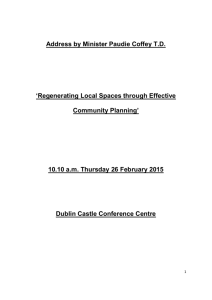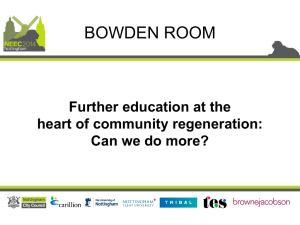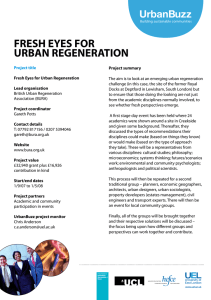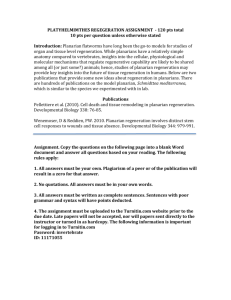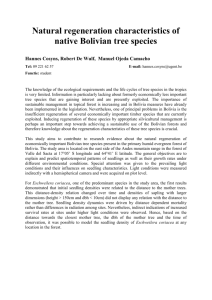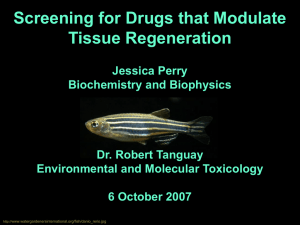HEALTH AND HOUSING – THE bIG Picture.
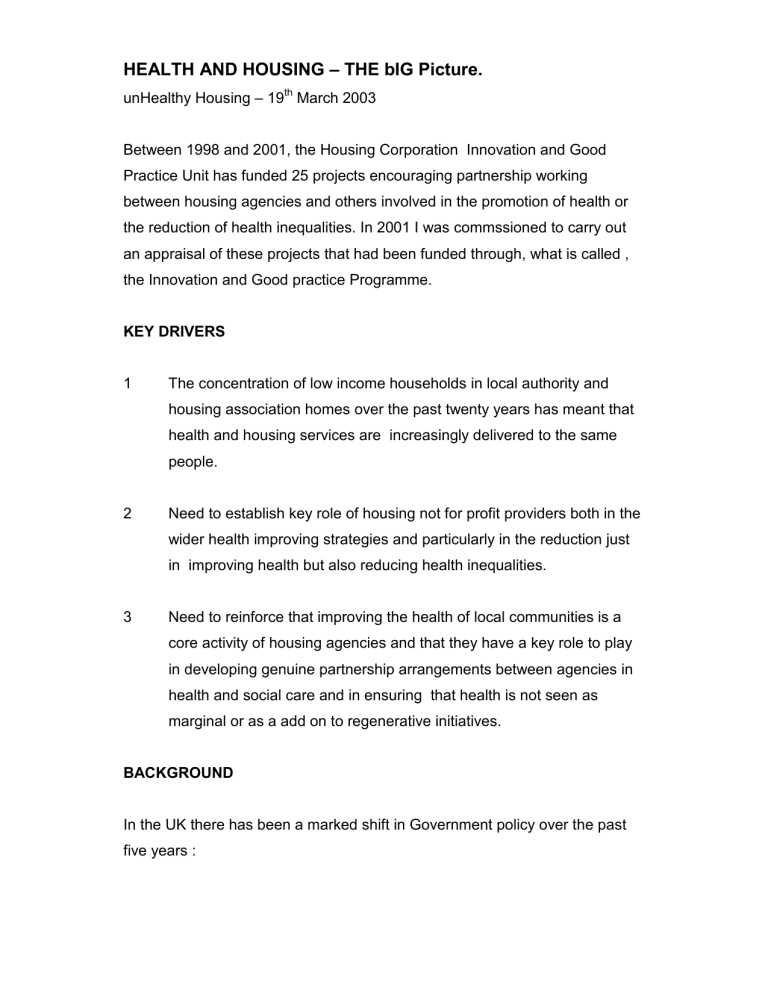
HEALTH AND HOUSING – THE bIG Picture.
unHealthy Housing – 19 th
March 2003
Between 1998 and 2001, the Housing Corporation Innovation and Good
Practice Unit has funded 25 projects encouraging partnership working between housing agencies and others involved in the promotion of health or the reduction of health inequalities. In 2001 I was commssioned to carry out an appraisal of these projects that had been funded through, what is called , the Innovation and Good practice Programme.
KEY DRIVERS
1 The concentration of low income households in local authority and housing association homes over the past twenty years has meant that health and housing services are increasingly delivered to the same people.
2 Need to establish key role of housing not for profit providers both in the wider health improving strategies and particularly in the reduction just in improving health but also reducing health inequalities.
3 Need to reinforce that improving the health of local communities is a core activity of housing agencies and that they have a key role to play in developing genuine partnership arrangements between agencies in health and social care and in ensuring that health is not seen as marginal or as a add on to regenerative initiatives.
BACKGROUND
In the UK there has been a marked shift in Government policy over the past five years :
§ Increasing focus on lengthening the life and improving the quality of like of those from lower income groups;
§ Acknowledgement that factors such as poverty, social exclusion, employment, housing, education and environment are important to improving health;
§ Giving renewed energy to local action that tackles the causes of poor health and particularly education, employment, housing and community safety.
PROJECTS
Most of the projects funded through the Innovation and Good Practice
Programme were sited within larger programmes focussed on the economic regeneration of so-called deprived areas or within public health partnerships.
The key areas are :
Repairs on prescription;
Making funds are available to tackle cold housing conditions that are associated with respiratory disease (particularly asthma), cardiovascular disease, falls and transfers of care by installing insulation and central heating packages. establish whether improvements to home heating, insulation and ventilation will improve health.
Preventative services for older people;
Identifying ways in which housing developments and housing services can prevent or delay the need for costly or intensive services, that improve quality of life and engagement with the community.
Community Safety
Projects promoting community safety by involving tenants in identifying hotspots both in the external and internal environment – particularly child accident prevention.
Homeless Families
A range of support services – mainly floating support – looking to enable homeless families and particualry refugee families to link up with local services and sustain tenancies.
Health Impact Assessment
Establish impact of housing development and refurbishment on population health, which components most affect health and to then go on to develop a screening tool for social housing developers wishing to undertake a health impact assessment.
KEY MESSAGES
Difficulty of engaging health practitioners in the debate;
Given focus on reducing waiting times and tackling shortages of doctors and nurses it is not surprising that wider health improvement issues get squeezed out
The need for local champions;
Too much activity is not owned by those leading processes – it is crucia that there is local leadership and ownership.
Health is chimney stacked on to regeneration and renewal projects;
Too often health is a late arriver at the regeneration table and so health projects end up being chimney-stacked on to existing programmes and do not cut across every theme.
New ‘flexibilities’ need to be supported by joint research and shared evaluation;
Much of the research, particularly qualitative research, is too readily dismissed when it comes to shifting investment from one budget area to another. There is a need for joint research undertaken to agreed methodologies that are ‘owned by all sides of any argument. Can’t help but speculate that ‘evidence’ is no substitute for political will and certainly shouldn’t be seen as a barrier to action.
Health Impact Assessment goes some way to resolve these difficulties, however, it can only assess inititatives that are already some way down the line and relies on interest being taken in it’s findings.
Whilst no one would question the value of work done through ‘innovation’ there is a need not merely to promote extra activities or projects, but to challenge organisational cultures and systems so that they can live up to the principles of
partnership and joint working. In the short term there is little appetite to set up new task group or to have yet more meetings. Rather there will be natural points of connection where there is a current need for multi-agency or multi-disciplinary responses. Even with this approach there are added costs that arise from each improvement so costs escalate and issues of cost-effectiveness kick-in. Over the medium and longer term, this argues for a complete re-conceptualisation of the dwelling or for what Avery Lovins calls tunnelling through the cost barrier. In a market place where demand outstrips supply there is no real incentive to achieve this.
However, there is an increasing realisation that consideration must not simply be given to re-housing but also to issue of quality – design and functionality, internal air quality, cost and type of heating, space etc, the relationship between dwellings and the wider environment and that this can only be achieved by systematic changes.
The next phase of my work will be to look at how we can transfer area based initiatives in to the mainstream and deliver a real change in the way services are delivered and how we can encourage organisations to re-conceptualise the product and achieve bigger changes form less investment.
§ Poor housing is good indicator of poverty and health inequality;
§ Health issues often chimney-stacked onto renewal activities;
§ Housing is effective tool in promoting social inclusion and in helping health organisations meet health targets;
§ There are natural points of connection requiring multi-agency response;
§ Health improvement should be overarching goal of regeneration;
§ Whilst change through innovation is useful, there is a need to achieve a reconceptualisation of the dwelling.


